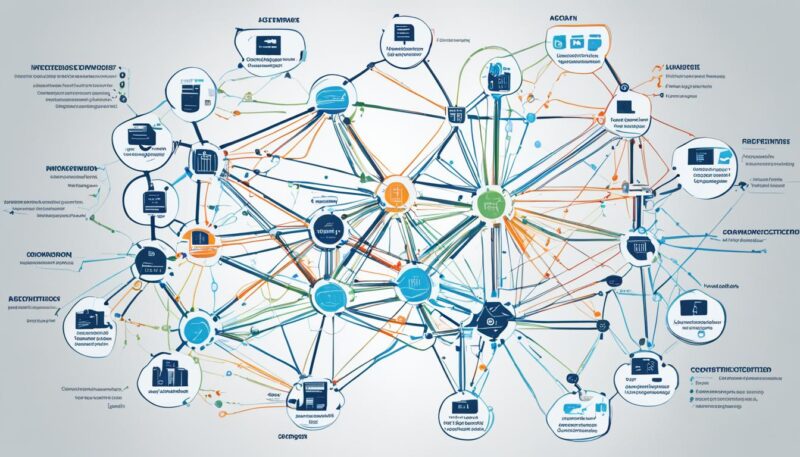Imagine being part of a team where adaptability and continuous improvement are not just buzzwords but core tenets driving every decision. In the dynamic world of software engineering, where requirements can change overnight, Project timelines can stretch indefinitely, and customer expectations evolve continuously; finding an approach that can navigate these uncertainties can feel like discovering a lifeline.
ASD, or Adaptive Software Development, embodies a philosophy born from real-world software development challenges. Originating in the 1990s through the visionary work of Jim Highsmith and Sam Bayer, ASD shifts the focus from rigid, plan-driven methods to a more flexible, people-centric approach. It’s a methodology deeply rooted in the principles of Agile Software Development, offering a fresh perspective on how software engineering can thrive on adaptability and collective intelligence.
This progressive approach has revolutionized how teams handle complex software projects, emphasizing risk management, continuous testing, and incremental delivery to ensure high quality and customer satisfaction. The essence of ASD lies in its ability to transform chaos into order, giving software engineers the tools to respond promptly to ever-changing requirements and environments.
Key Takeaways:
- ASD stands for Adaptive Software Development, a key methodology in software engineering.
- Developed in the 1990s by Jim Highsmith and Sam Bayer.
- Focuses on adaptability, risk management, and continuous testing.
- Originates from the principles of Agile Software Development.
- Promotes a human-centric, collaborative approach to software development.
- Aims at high quality and customer satisfaction through iterative processes.
Understanding the Core Principles of ASD in Software Engineering
The Adaptive Software Development (ASD) model is transformative, steering organizations towards Agile frameworks and iterative development. Comprehending the foundational ASD principles is essential for any development team aiming to excel in an ever-changing technological landscape.
Adaptability
At the heart of ASD principles lies adaptability. This principle advocates for flexible, high-level planning over rigid, prescriptive roadmaps. With adaptability, teams can pivot seamlessly in response to evolving requirements, technological advancements, and market fluctuations. This flexibility is integral to maintaining momentum across the entire software lifecycle.
Collaborative Environment
A collaborative environment encourages open communication within teams and fosters a culture of shared trust. By promoting a collaborative environment, ASD principles ensure that every team member can contribute their creativity and expertise toward the project’s success. This collaboration not only enhances individual performance but also contributes to the overall quality and efficiency of the development process.
Continuous Learning
Continuous learning underpins the ethos of ASD. By incorporating regular feedback from each iteration, teams can refine both processes and products continuously. This principle of continuous improvement in ASD is pivotal for optimizing Agile practices and achieving long-term success. Engaging in continuous learning ensures that teams remain resilient and responsive to the dynamic nature of modern software projects.
These principles are embedded within the three main phases of the ASD life cycle: Speculation, Collaboration, and Learning. Each phase actively contributes to shaping software teams that can surpass conventional project success metrics. By embracing these foundational tenets, ASD aligns seamlessly with other Agile frameworks, fostering iterative development and paving the way for continuous improvement in today’s complex software landscape.
What is ASD in Software Engineering?
Agile Software Development, prominently spearheaded by Jim Highsmith, revolutionizes the approach to software project management by embracing change and fostering continuous learning. ASD processes emphasize an iterative framework, encouraging a results-oriented approach marked by strategic adaptability and intensive collaboration. This agility is paramount to the success of modern software development methodologies, aiming to tackle complex projects with a high degree of uncertainty.

The principles of ASD are unequivocally demonstrated in contemporary success stories. For example, although Slack was not officially developed using these methodologies, it exemplified crucial ASD values such as real-time customer feedback and speculative planning. Through continuous learning and adaptability, teams can achieve remarkable efficiency and innovation.
ASD processes diverge from traditional deterministic methods by fostering time-boxed iterative cycles and adopting a proactive stance towards change. This enables swift and responsive delivery of high-quality software, addressing the dynamic needs of todays’ fast-paced development environments. The framework’s focus on emergent solutions rather than prescriptive strategies marks a significant shift in software project management.
Highsmith’s influence on Agile Software Development has made it particularly suitable for scenarios where customer feedback and iterative learning cycles are critical. By strategically incorporating risk-driven planning, teams can navigate uncertainties effectively, ensuring that each phase of development contributes meaningfully to the final product.
To encapsulate the distinctive elements of ASD, let’s consider the following aspects:
- Iterative Framework – Emphasizes small, manageable development cycles to boost adaptability.
- Strategic Adaptability – Enables teams to pivot based on real-time feedback and emerging project requirements.
- Intensive Collaboration – Promotes continuous engagement between team members and stakeholders.
- Continuous Learning – Ensures ongoing improvement and innovation.
ASD in software engineering is not merely a process but a mindset that transforms how teams approach and resolve complex technical challenges in software development methodologies.
Conclusion
Adaptive Software Development (ASD) has established itself as a pivotal methodology in the realm of software engineering, adeptly harmonizing the pressing needs for speed, adaptability, and high-quality outcomes. By integrating core Agile techniques, ASD enables software development teams to embrace iterative processes that are essential for managing and succeeding in dynamic and unpredictable project environments.
One of the standout ASD benefits is its strong customer focus, fostering an environment where constant feedback and collaboration lead to a product that truly meets user needs. This approach is complemented by its emphasis on teamwork, empowering teams to work cohesively, share knowledge, and continuously strive for improvement. The coexistence of both Scrum and ASD methodologies within Agile Software Development frameworks allows for a versatile and adaptive approach to project management.
While the implementation of ASD does pose challenges, such as the need for highly skilled practitioners and continuous customer involvement, the rewards often outweigh these demands. Organizations that embrace ASD can adeptly navigate modern software projects by proactively addressing risks, incorporating ongoing feedback loops, and fostering an environment ripe for innovation and emergent solutions. These attributes showcase the effectiveness of ASD in driving continuous improvement in adaptive software development methodologies.
Source Links
- https://www.geeksforgeeks.org/adaptive-software-development-asd/
- https://kruschecompany.com/adaptive-software-development-asd/
- https://www.nimblework.com/agile/adaptive-software-development-asd/








